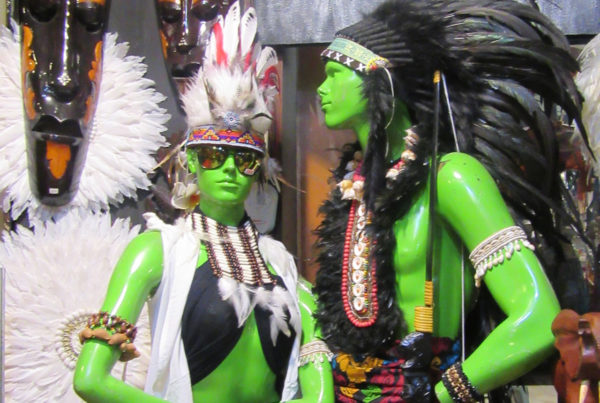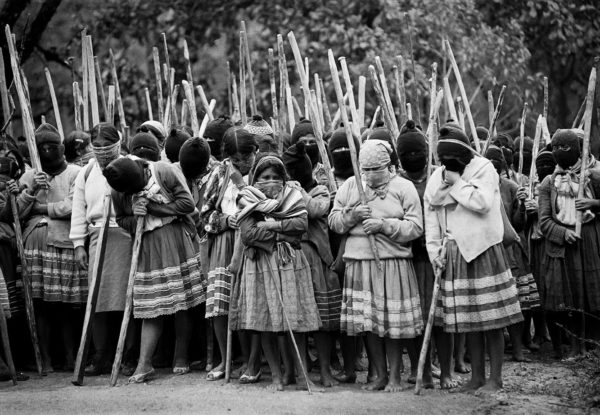
In 2012, Victoria’s Secret issued an apology after one of the models in its fashion show wore a Native American-style headdress. It wasn’t the first—or last—instance of what is called “cultural appropriation” in fashion. Paul Frank, Abercrombie and Fitch, and Urban Outfitters, among others, have been challenged for using traditional motifs from American Indian cultures in their clothes. At the same time, contributions of Native American designers to fashion, and the history of Native American design remain underappreciated or unrecognized. The National Museum of the American Indian in Lower Manhattan, part of the Smithsonian Institution, recently mounted the exhibition Native Fashion Now to address these and other concerns while highlighting beautiful objects.
On April 22, the museum hosted an academic symposium, “Native/American Fashion: Inspiration, Appropriation, and Cultural Identity.” FIT faculty members Anna Blume, History of Art, and Daniel James Cole, Fashion Design–Art, gave presentations, while Fashion Design chair Eileen Karp and History of Art faculty member Amy Werbel moderated the ensuing panel discussion. FIT’s Chief Diversity Officer Ron Milon contributed opening remarks. History of Art faculty member Kyunghee Pyun also contributed to the organization of the symposium.

Blume used careful analysis of Maya works of art to challenge stereotypes. “I would like,” she said, “to allow for a vision of nuance, choice, even ambiguity in the self-construction of identities specifically amongst the Maya of Central America.” She interpreted a statue of the Virgin Mary, with her European polychromed face draped in a traditional Maya cloth known as a tzute, as a statement about how the Maya creatively responded to the long violent history of colonization. “Through sculpture and cloth, appropriation and adornment,” she said, “we see Maya women actively making sense of an imposed religion they have not passively accepted, but transformed into their own.”
Cole recounted how, while visiting a gift shop in Bandung, Indonesia, he saw a set of Native American–style feathered headdresses or “war bonnets” for sale as costumes. He soon discovered that American Indian Halloween outfits were popular in Malaysia and Taiwan. These struck him as offensive, though not all instances of cultural appropriation necessarily are. “Sometimes I get accused of cultural appropriation when I wear shirts from Indonesia,” he said, although Indonesian and Malaysian fabrics are his specialty, and he appreciates them. “Usually, they’re gifts from designers or even diplomats,” he added. Upon reflection, he concluded that the gesture would be offensive if the appropriated symbol originally had a religious purpose: “If symbols are spiritual and used commercially, that’s when it’s over the line.”
Native Fashion Now is on view at the National Museum of the American Indian at 1 Bowling Green in Lower Manhattan through September 4.
